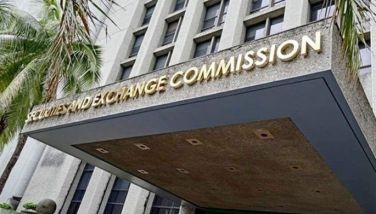Costly traffic
Traffic is costly, and that is an undisputed fact, whether in the Philippines or on the other side of the globe.
The Economist earlier published an article citing data from the Center of Economics and Business Research, a London-based consultancy, and traffic data firm INRIX on the impact of traffic on the British, French, German, and American economies by measuring three costs: how sitting in traffic reduces productivity of the labor force, how inflated transport costs push up the prices of goods, and the carbon-equivalent cost of the fumes that exhausts sputter out. In 2013, the expenses from congestion totaled $200 billion (0.8 percent of GDP) across the four countries, with the figure expected to increase to $300 billion by 2030. (http://www.economist.com/blogs/economist-explains/2014/11/economist-explains-1)
The impact of traffic congestion on the economies of poorer countries, like that of the Philippines, can be much, much greater.
Traffic prevents trucks from entering and leaving Manila’s ports faster, resulting in accumulation of charges and penalties such as port-congestion surcharge (PCS), random container-cleaning fee, terminal-handling fee, container-deposit fee and container-detention charge, among others.
Earlier, Philippine Chamber of Commerce and Industry (PCCI) president Alfredo Yao said the surcharges slapped on businesses during the peak of the port-congestion problem amounted to between $600 to $700 per twenty-foot equivalent unit (TEU).
The Port of Manila’s worsening congestion was estimated earlier to have cost foreign and local businesses over $500 million in total losses.
European Chamber of Commerce in the Philippines (ECCP) president Michael Raeuber said in separate news report that port-congestion surcharges at the Manila International Container Terminal (MICT) and the South Harbor during the gridlock reached $166 million, while those for trucking totaled an additional $418 million since last year.
For his part, AirAsia CEO Anthony Fernandes said that inadequate infrastructure, particularly in the aviation or transport sector, has barred the Philippines from realizing its full potentials as the shining light of tourism in Asia, pointing out that it is ridiculous for a country whose people are so fantastic, who speak English, who are so hospitable, to have only two million tourists. He says it is just too tough to get to the Philippines, citing our infrastructure as one of the reasons.
This should have been enough of a wake-up call for our government agencies to put their acts together to come up with a lasting solution to this problem.
One solution is by allowing pending infrastructure projects to finally take off the ground. The government should move fast on its flagship program, the public-private partnership (PPP) program, while the President should tell his underlings to eliminate all backlogs ASAP.
Our country has suffered another casualty, after Megawide ?World Citi Consortium, Inc. ?(MWCCI) announced the cancellation of its P8.69-billion PPP contract for the Philippine Orthopedic Center (POC), citing the failure of the Department of Health (DOH) after two years to release the Certificate of Possession that would have allowed Megawide to build the 700-bed specialty hospital at the National Kidney and Transplant Institute (NKTI) compound in Quezon City.
MWCCI’s mother firm, ?Megawide ?Construction Corp. (MCC) has bagged four more PPP deals, including the P16.43-billion first phase of the PPP for School Infrastructure Project (PSIP) and the P17.52-billion Mactan-Cebu International Airport (MCIA) passenger terminal building.
Unfortunately, this is not Megawide’s first heartache.
The construction of the MCIA terminal building was delayed due to the failure of the Mactan-Cebu International Airport Authority (MCIAA) to promptly find a new area for the Philippine Air Force (PAF) facilities that occupied part of the new terminal site.
Another project facing delays is the P4-billion Integrated Transport System (ITS) won by Ayala Land Inc. (ALI). According to the Department of Transportation and Communications, instead of May 2016, the construction of the 5.57-hectare terminal in Taguig City will begin only in August next year. The Ayala group has bagged four PPP deals, including this ITS terminal and the recently opened four-kilometer Muntinlupa-Cavite Expressway (MCX).
But probably no other project is suffering a longer delay than the proposal of the Metro Pacific Investments Corp. (MPIC) group to build the NLEX-SLEX Connector Road project.
Government first argued on whether or not the proposal should take the Swiss Challenge route. It recommended the group enter into a joint venture arrangement with the Philippine National Construction Corp. (PNCC), which holds the franchise to NLEX and SLEX, to facilitate matters.
After a joint venture agreement was signed, government then tells the group that such arrangement is not allowed and then says the proposal should be subject to a Swiss Challenge which allows other groups to submit a better proposal that can be matched by the proponent if it chooses to.
The Swiss Challenge was earlier set for the third quarter of this year but was deferred after the Metro Pacific group was told the conduct of the challenge must first be approved by the Investment Coordination Committee (ICC), and then confirmed by the NEDA Board. It is only after confirmation that the invitation to bid can be published.
But then belatedly, the Department of Finance raises a new issue, this time involving the basis for the computation of the project’s rate of return. The DOF says it should be based on the internal rate of return when previous approvals by the NEDA Board were based on the weighted average cost of capital (WACC).
How long would this recomputation delay the project again?
Due to all these delays, plus the need to redesign the project after the NEDA Board approved the North-South Railway Project (NSRP) that would use the same right of way, the connector road project’s cost has ballooned from P11 billion to between P16-P17 billion.
This road project once operational will help ease traffic congestion to a great extent. It will also cut travel time between NLEX and SLEX, not to mention the fact that it will give motorists an alternative to taking EDSA and C-5.
Isn’t it time that government put this project on top of its priority list?
For comments, e-mail at philstarhiddenagenda@yahoo.com.
- Latest
- Trending


























